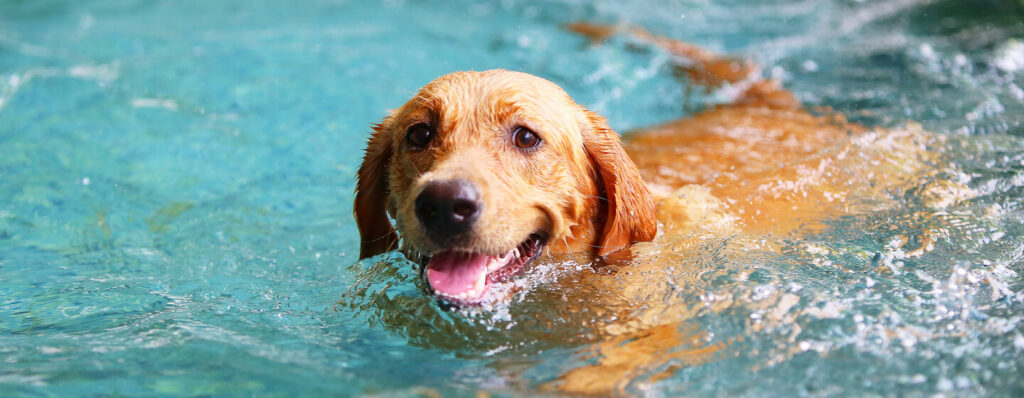
Swimming provides dogs with a low-impact, full-body workout that strengthens muscles and improves cardiovascular health, making it an excellent form of exercise. The water’s buoyancy helps to alleviate joint stress, making it ideal for dogs with mobility problems.
Can all dogs swim?
A widespread misconception is that all dogs are born with the ability to swim. While some dogs may have a natural talent for swimming, not all dogs possess this skill instinctively.

How to teach your dog how to swim if your dog can’t swim?
This step-by-step guide should soon have your dog swimming like a pro!
- Gently guide your dog into the water, making sure not to go too far and only wet its paws and part of its legs. Let it splash around and become accustomed to the sensation. This may require several attempts.
- Once it appears at ease, lead it further into the water. Ensure that you are always right beside it and holding it.
- Your dog will start paddling with its front legs first, but this is not very efficient as it will tire easily.
- Make sure your dog is completely in the water and that you are holding them around the belly. The depth will cause it to start kicking with its hind legs as well.
- Proceed at a pace that is comfortable for your dog. If it appears frightened or anxious, retreat to the shore and reward it with treats and praise. Only re-enter the water once it appears at ease.
- Be prepared for the process to take a while and remain patient. Keep in mind that the goal is to demonstrate to your dog that swimming can be an enjoyable experience.
Make sure to prioritize your dog’s safety, come prepared, and have a great time swimming together.

